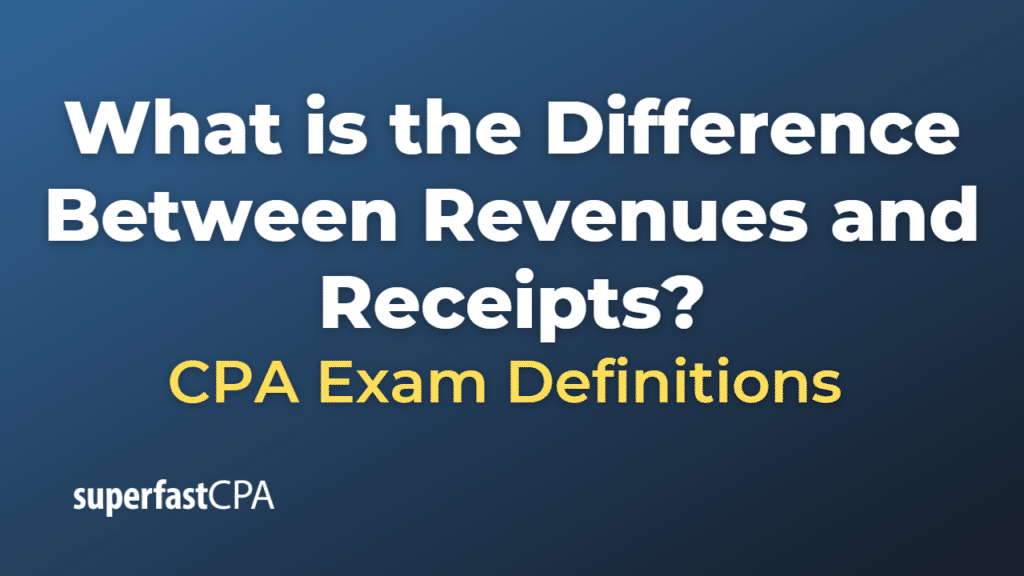Difference Between Revenues and Receipts
“Revenues” and “receipts” are both associated with income that a company receives, but they are used in different contexts and have different meanings in accounting:
- Revenues:
Revenues, also known as sales, represent the total income a company earns from its normal business activities, typically from selling goods and services to customers. Revenue is recognized when the earnings process is complete, as per the revenue recognition principle in accrual accounting. This principle states that revenue is recognized when it is earned, which may not necessarily be when cash is received.For example, if a company sells a product to a customer on credit, it would recognize the revenue from this sale as soon as the product is delivered, even though it may not receive payment until a later date. - Receipts:
Receipts, on the other hand, typically refer to the actual inflow of cash into the company, regardless of when the revenue is recognized. This concept is used in cash accounting, where income is recorded only when cash is received, and expenses are recorded only when cash is paid.So, using the previous example, if a company sells a product to a customer on credit, it would only record a receipt when it actually receives payment from the customer.
In short, revenue relates to the total income earned from selling goods and services, and it’s recognized when the goods are delivered or services are provided (accrual basis of accounting). In contrast, receipts are about the actual cash inflows, which may not coincide with when the revenue is earned (cash basis of accounting). It’s also worth noting that in some contexts, “receipts” may also refer to documentation that proves a purchase or payment was made.
Example of the Difference Between Revenues and Receipts
Let’s look at an example to understand the difference between revenues and receipts:
Example:
Suppose a publishing company, BookMaster Inc., sells 1000 books in December 2023 to a large retail bookstore. Each book is sold for $20, so the total sales amount is $20,000. However, the payment terms are 30 days, which means BookMaster Inc. won’t receive the cash until January 2024.
Revenue: Under the accrual accounting method, BookMaster Inc. will recognize the $20,000 as revenue in December 2023, even though it hasn’t received the cash yet. This is because the revenue recognition principle states that revenue is recognized when it’s earned (i.e., when the books are delivered), not when the cash is received.
Receipts: In contrast, under the cash accounting method, BookMaster Inc. will not record the $20,000 as income in December 2023 because it hasn’t received the cash yet. Instead, it will record a $20,000 cash receipt in January 2024 when it receives the payment from the bookstore.
This example shows how the timing of revenue recognition can differ from the receipt of cash, depending on whether a company uses accrual accounting or cash accounting. While revenue reflects the total value of goods or services provided, receipts reflect the actual cash inflows from transactions.













